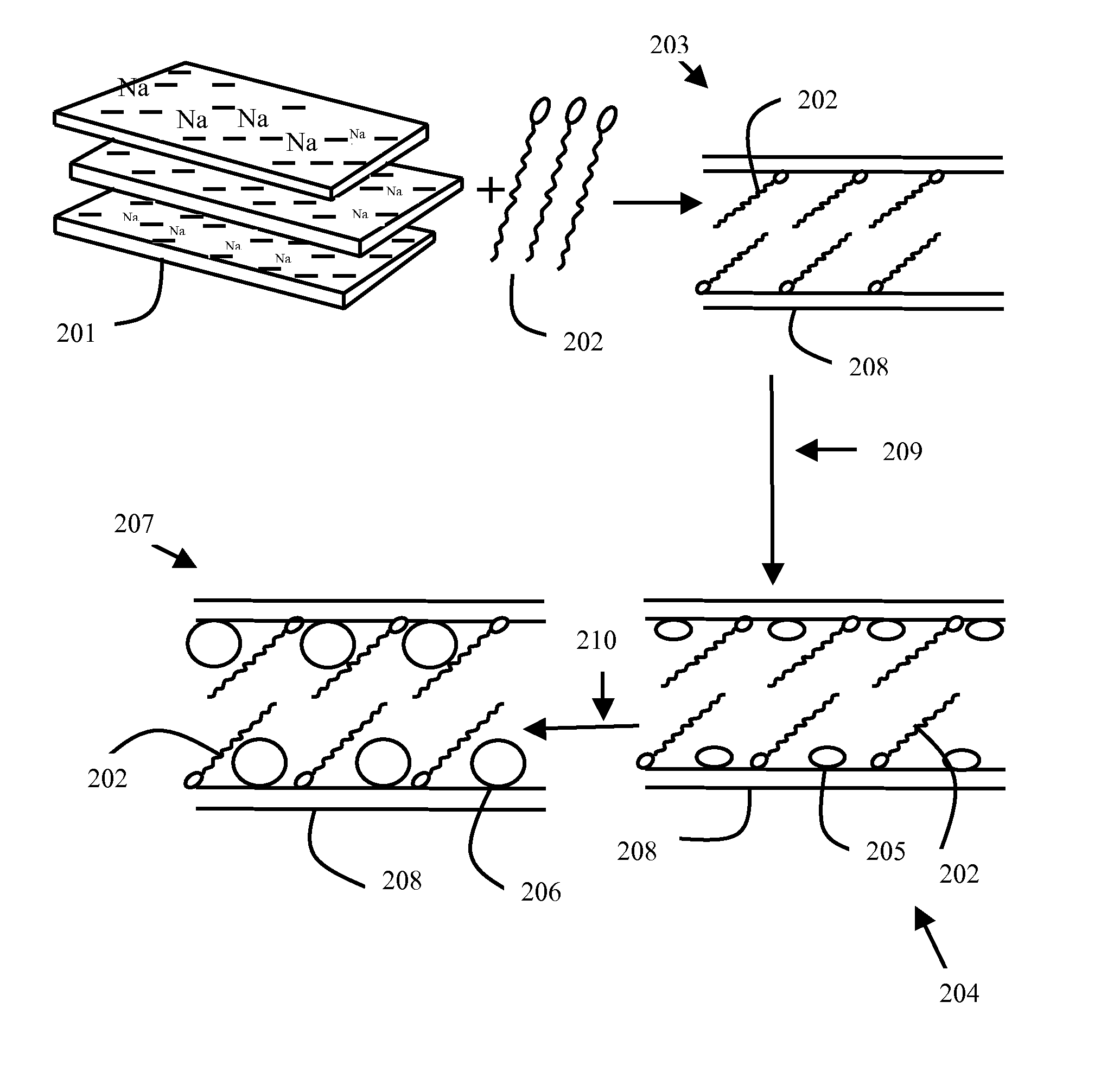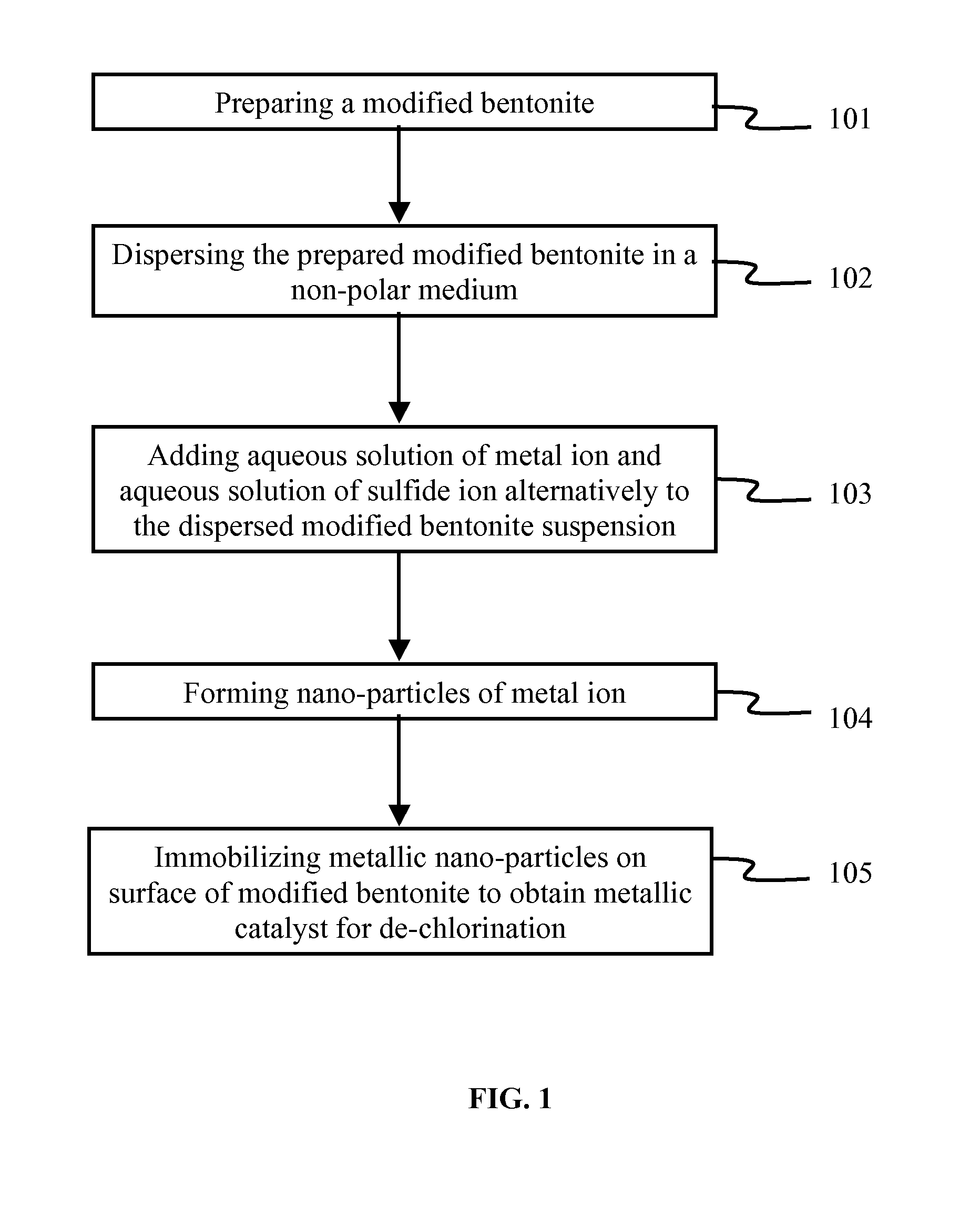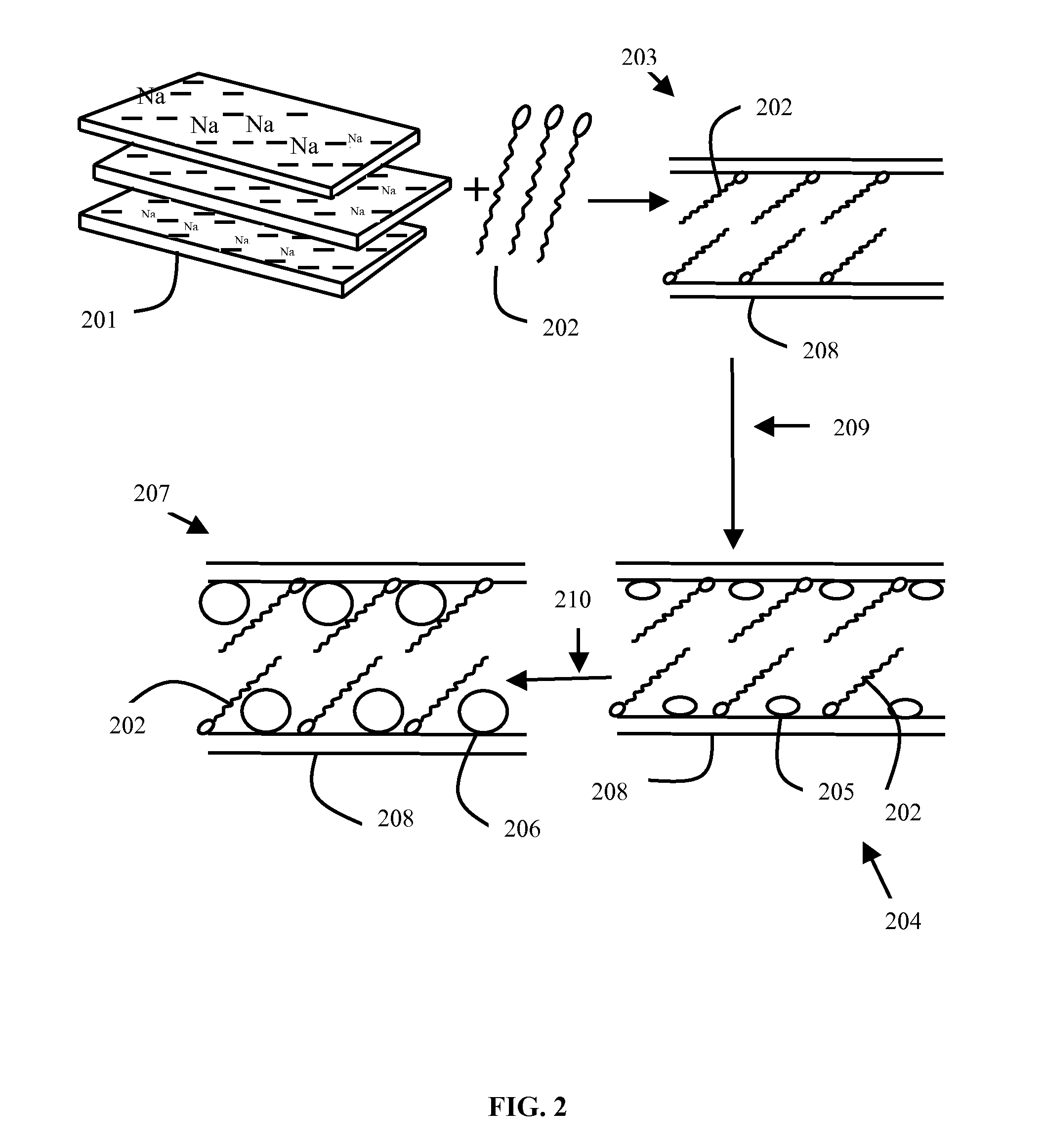METHOD OF PREPARATION OF ZnS AND CdS NANOPARTICLES FOR DECHLORINATION OF POLYCHLOROBIPHENYLS IN OILS
- Summary
- Abstract
- Description
- Claims
- Application Information
AI Technical Summary
Benefits of technology
Problems solved by technology
Method used
Image
Examples
example 1
Blank Reaction 1
[0087]A mixture of 1,2,4,5-tetrachlorobenzene (0.2 g, contains 65.74 wt % Cl), modified bentonite containing ZnS nano-particles (0.5 g), and 20 mL toluene were introduced into a 50 mL Morton flask equipped with a magnetic stirrer and a condenser. The suspension was irradiated with a UV lamp (a 200 W, high pressure Hg lamp, 340 nm) for a period of 6 h. The catalyst was separated by filtration, and the concentration of the released chlorine as chloride ion was measured using the standard methods. The amount of chlorine in the organic phase was less than 5 wt percent of the chlorine in the original compound.
example 2
Blank Reaction 2
[0088]The procedure of example 1 was repeated using 0.2 g of a standard sample (Aroclor 1242, contains 52 wt % CO. The suspension was irradiated with a UV lamp (a 200 W, high pressure Hg lamp, 340 nm) for a period of 6 h. The catalyst was separated by filtration, and the concentration of the released chlorine as chloride ion was measured using standard methods. The amount of chlorine in the residual Aroclor was less than 3 wt % of the chlorine in the original sample.
examples 3-6
[0089]The procedure of example 1 was repeated using 0.2, 1.0, 2.0, and 3.0 g of Askaral oil containing PCBs. In these experiments the amount of catalyst (0.5 g), and the amount of solvent (20 mL) were the same as the example 1. The suspensions were irradiated with UV lamp (a 200 W, high pressure Hg lamp, 340 nm) for a period of 3 h. The catalyst was separated by filtration, and the concentration of the released chlorine as chloride ion was measured using standard methods. Data are summarized in Table 1. On the basis of these data, use of 0.2 g Askaral oil is preferred, when 0.5 g of the catalyst, and 20 mL of toluene were applied.
TABLE 1Effect of the amount of Askaral oilAmount of Askaral oilMeasured chloride ionEntry(g)(ppm)10.21.72 ± 0.1211.84 ± 0.1323.48 ± 0.1436.09 ± 0.1Reaction conditions: 0.5 g of the catalyst, 20 mL toluene, irradiation time, 3 h.
PUM
| Property | Measurement | Unit |
|---|---|---|
| Time | aaaaa | aaaaa |
| Time | aaaaa | aaaaa |
| Volume | aaaaa | aaaaa |
Abstract
Description
Claims
Application Information
 Login to View More
Login to View More - R&D
- Intellectual Property
- Life Sciences
- Materials
- Tech Scout
- Unparalleled Data Quality
- Higher Quality Content
- 60% Fewer Hallucinations
Browse by: Latest US Patents, China's latest patents, Technical Efficacy Thesaurus, Application Domain, Technology Topic, Popular Technical Reports.
© 2025 PatSnap. All rights reserved.Legal|Privacy policy|Modern Slavery Act Transparency Statement|Sitemap|About US| Contact US: help@patsnap.com



